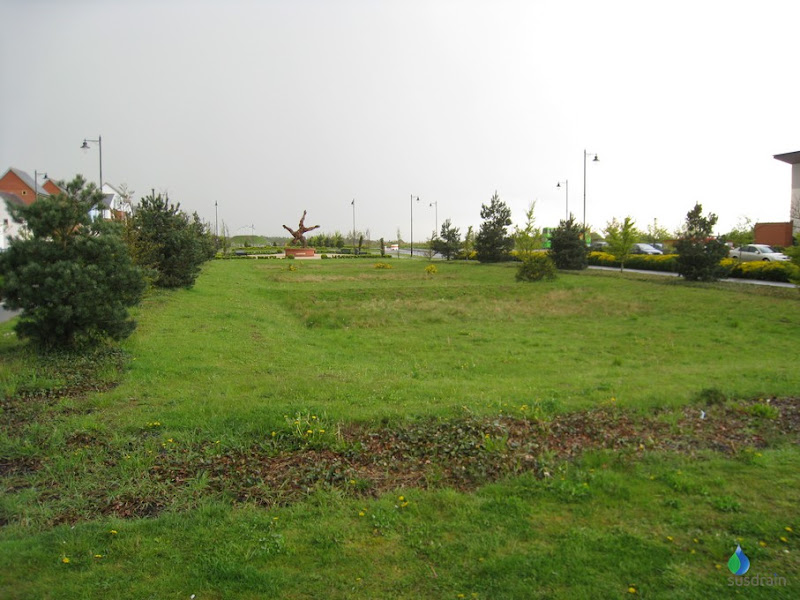- Delivering SuDS
- Using SuDS
- Background
- SuDS principles
- Benefits of SuDS
- Benefits of SuDS
- Why developers should choose SuDS
- Flood risk management
- Water quality management
- Biodiversity & ecology
- Amenity
- Air quality
- Building temperature
- Carbon reduction and sequestration
- Crime
- Economic growth
- Enabling development
- Flexible infrastructure/climate change adaptation
- Education
- Groundwater recharge
- Health and well being
- Pumping wastewater
- Rainwater harvesting
- Recreation
- Tourism
- Traffic calming
- Treating wastewater
- SuDS components
- SuDS components overview
- Source control
- Swales & conveyance channels
- Filtration
- Infiltration
- Retention & detention
- Wetlands
- Inlets, outlets and control structures
- SuDS performance & monitoring
- Delivery
- The costs & benefits of SuDS
- Adoption & maintenance of SuDS
- Legislation & regulation
- Design guidance
- Retrofitting SuDS
- Drainage exceedance
Component: Infiltration basins
Description
Infiltration basins are vegetated depressions designed to store runoff on the surface and infiltrate it gradually into the ground. They are dry except in periods of heavy rainfall.
Advantages & disadvantages
|
Advantages |
Disadvantages |
|
|
Where component can be used 
Residential: Yes
Commercial/industrial: Yes
High density: No
Retrofit: No
Contaminated sites: No
Sites above vulnerable groundwater: No
Performance
Peak flow reduction: Average
Volume reduction: Good
Water quality treatment: Good
Amenity potential: Good
Ecology potential: Good
Quantity
Infiltration techniques:
-
store runoff by allowing temporary and shallow ponding on the surface;
-
enhance the natural ability of the soil to drain the water. They do this by providing a large surface area in contact with the surrounding soil, through which the water can pass.
The amount of water that can be disposed of by an infiltration basin within a specified time depends mainly on the infiltration potential of the surrounding soil. The size of the device and the bulk density of any fill material will govern storage capacity.
Quality
Runoff is treated in different ways in an infiltration basin. These include:
-
physical filtration to remove solids
-
adsorption onto the material in the surrounding soil
-
biochemical reactions involving micro-organisms growing on the fill or in the soil.
The level of treatment depends on the size of the media and the length of the flow path through the system, which controls the time it takes the runoff to pass into the surrounding soil. Pre-treatment may be required before polluted runoff is allowed into an infiltration basin.
Amenity
Infiltration basins are easy to integrate into a site. They are ideal for use as playing fields, recreational areas or public open space. Infiltration basins can be planted with trees, shrubs and other plants, improving their visual appearance and providing habitats for wildlife. They increase soil moisture content and help to recharge groundwater, thereby mitigating problems of low river flows.
Maintenance
-
Regular inspections for signs of deterioration in performance, clogging and other blockages
-
Litter/trash removal
-
Inlet/outlet cleaning
-
Vegetation management
-
Regular removal of sediment from pre-treatment.
Read more on:



